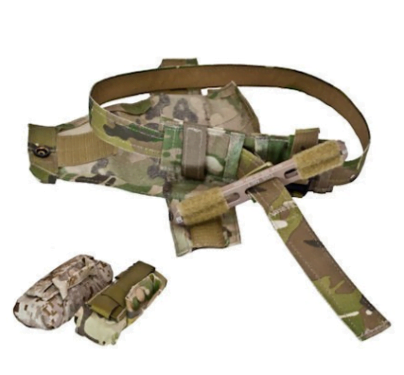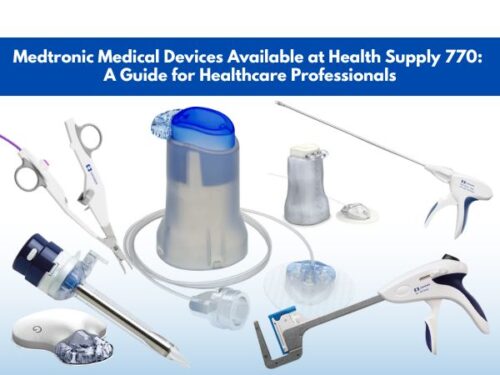What are the different types of Tourniquets?

Tourniquets are one of the most ancient medical devices that have been used since the fourth century BC. Alexander the Great’s military campaigns also included the use of tourniquets that helped the soldiers to prevent excessive blood loss due to wounds. The Romans used tourniquets to prevent excessive blood loss during amputations. These ancient tourniquets were made of bronze and leather was used to ensure the comfort of the patient. The significance of tourniquets in emergencies can be understood by the fact that it was advised to each soldier of the royal navy to keep a tourniquet with him at all times. This was done to help the soldiers to prevent blood loss and save the lives of the officers in case of an injury. Excessive blood loss can make the patient’s condition severe and lead to cardiac arrest. This can result in the death of the patient. To stop blood loss, a tourniquet is used in emergencies or medical settings which in turn helps to save the life of the patient. Due to its vast uses and significance in preventing complications, a tourniquet is a highly significant medical device that can often prove lifesaving.

Types of tourniquets
What is a tourniquet?
A tourniquet is a medical device that helps to control and reduce blood flow by applying pressure to a limb or extremity. A tourniquet is often used in emergencies and is often an important part of first aid treatment. In emergencies, a tourniquet can help to control the blood flow till the patient is taken to the hospital and proper medical care is given to the patient. As blood is a precious resource in the human body, its excessive loss should be prevented at all costs to prevent any serious consequences.
Types of tourniquets
Since the beginning, tourniquets were mostly used during amputations. As time passed, other uses of tourniquets were introduced in surgical and war situations where it was considered of great significance. Different types of tourniquets are used in different fields today. Some types of tourniquets are described below.
Surgical tourniquet
Surgical tourniquets are tourniquets that are used in surgeries to control blood flow from a limb. These tourniquets that are used in surgeries include silicone ring tourniquets, elastic ring tourniquets, and, pneumatic tourniquets. As surgical tourniquets are available in different sizes, the right size for a patient should be determined by observing the blood pressure and limb circumference of the patient.
Most of the surgical limbs are applied with the help of two persons where one person holds the limb of the patient while the other places the device on the patient’s limb. When used in surgeries, surgical tourniquets can help minimize blood loss which can prevent complications and prove to be lifesaving for the patients.

Use of a surgical tourniquet
Emergency tourniquets
In an emergency where a person is severely injured, the duration between taking the patient to the hospital and providing medical care can prove life-threatening for the injured person. This is often because blood continues to flow while the injured person is rushed to the hospital. For this reason, an emergency tourniquet is often used in first-aid treatments. These tourniquets help to prevent blood loss before the patient is taken to the hospital and given medical care. The emergency tourniquets are specifically useful in restricting blood flow from
- Gunshot wounds
- Household accidents, especially those involving sheet glass
- Farm and industrial accidents
- Crushed limb injuries
The emergency tourniquets use different locking mechanisms including windlass, ratchet buckle, dial, pneumatic hand pump, and wide stretch band. These locking mechanisms help in maintaining the necessary pressure on the extremity to stop blood flow. These tourniquets work by occluding the blood vessels when applied and tightened to the injured limbs which helps to reduce the flood flow. As these emergency tourniquets save the patient’s blood, they can prove to be lifesaving.

Military emergency tourniquet
Combat application tourniquet
Developed by Ted Westmoreland, the combat application tourniquet (CAT) is used by the U.S. military, the NHS ambulance service, and Fire and rescue services in the UK. It is a small tourniquet that can be self-applied and is used by military and emergency personnel all around the world. In military and emergency situations, an injured person can use this tourniquet to reduce the blood flow from the injured limb which can often prove lifesaving.
Clinical tourniquets
Clinical tourniquets are the simplest and lightest of all types of tourniquets that are available. These tourniquets are not used in emergency situations to control blood flow rather these are used to pronounce the veins for needle insertion and drawing blood. These clinical tourniquets are extremely low-tension and cannot be used in emergencies to stop blood flow.
Rehabilitation tourniquets
To increase muscle size and strength during low-intensity exercise, a tourniquet is used in rehabilitation settings. This tourniquet helps to restrict the arterial blood flow at a safe and consistent pressure for a short period.
Conclusion
Tourniquets are ancient medical devices that are extremely important in ensuring the patient’s safety by preventing blood loss in a medical or emergency situation. These tourniquets have been used for the past several centuries and were used in different situations in the past.
A simple tourniquet cuff can be made using a rope and a stick. Several types of tourniquets are used for different purposes but the primary function of these tourniquets is to restrict the blood flow from a limb or extremity by occluding the blood vessels.
The process of applying and removing a tourniquet should be done with great attention to detail and the duration for which a tourniquet is applied should also be monitored carefully to avoid any undesired consequences.
When not used properly or used for longer periods a tourniquet can cause some possible side effects including temperature changes, pain, skin problems, respiratory effects, cardiovascular effects, and, paralysis.
However, due to their benefits in different fields and their significance in saving lives, a tourniquet is a lifesaver and can prove to be very important in medical and emergency situations.



















